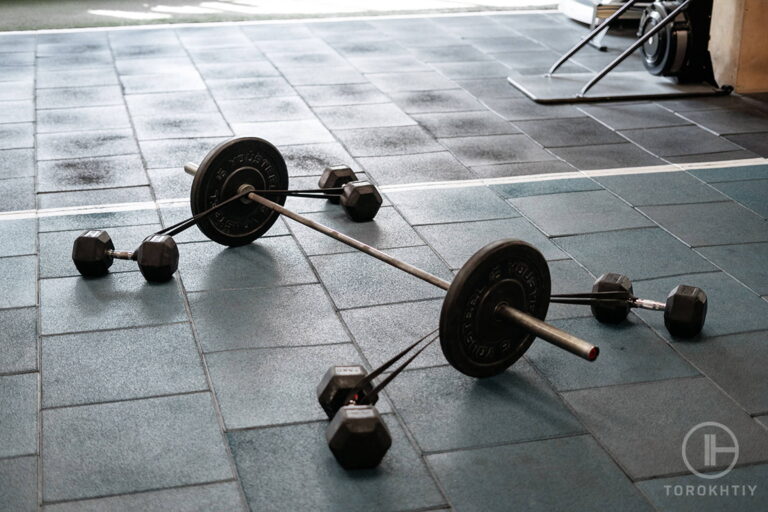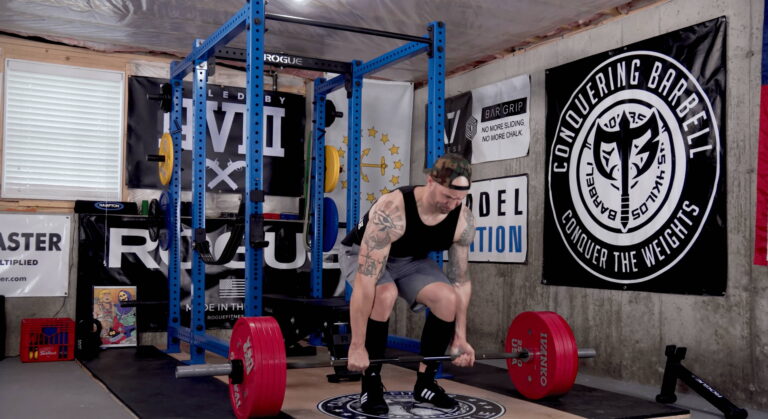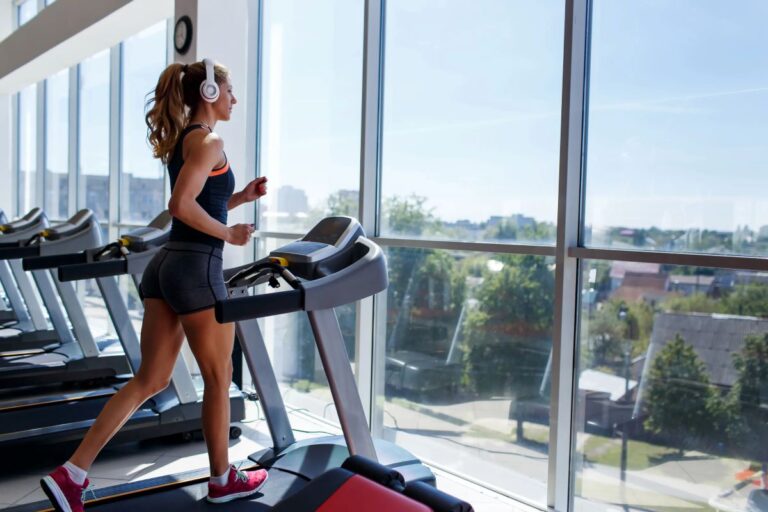Are Leg Extensions Bad For Knees? Exploring The Impact
Are leg extensions bad for knees? That is one of the most asked questions in traditional gyms. There are always raised concerns about whether leg extensions harm the knees.
Leg extensions are a popular exercise in fitness, commonly used to target the quadriceps muscle group. In this comprehensive guide, we will delve into the impact of leg extensions on your knees, provide insights into proper form, discuss rehabilitation applications, and introduce variations to minimize the risk of knee pain and injury.
Are Leg Extensions Bad for Knees? – Leg extension exercises, when performed incorrectly, can cause knee injuries. However, when executed properly, they are an effective way to strengthen and increase the size of your legs.
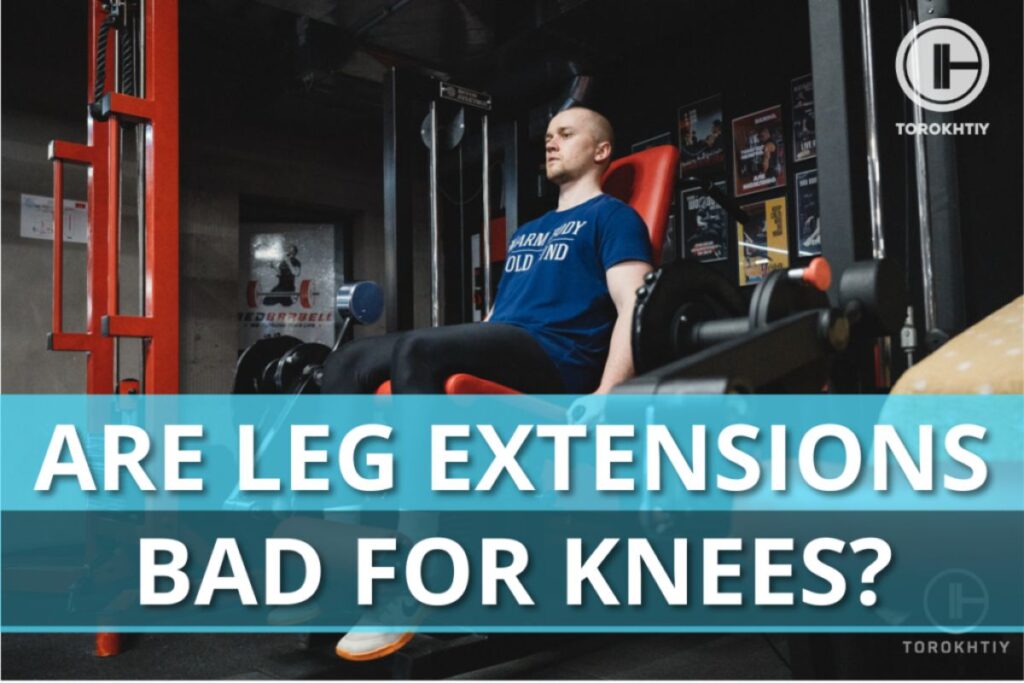
Are Leg Extensions Bad for Knees?
Before we talk about leg extension knee pain, let’s talk about how you perform a leg extension on a machine specifically designed for this exercise. You sit on the device with your legs hooked under a padded bar, extending your knees to lift the weights. While leg extensions primarily work the quadriceps muscles, they can be harsh on the knees if not executed correctly.
The potential for leg extensions bad for knees arises from the biomechanics of the exercise. When your legs are extended, the forces on the knee joint can be significant, mainly if your form is poor. This stress may result in discomfort, pain, or even injury to the knee joint.
When Leg Extensions Can Hurt Your Knees?
Leg extension hurts knees under the following circumstances:
1. Incorrect Form
Insufficient form is one of the primary culprits of knee pain after leg extensions. When you execute leg extensions with improper form, you subject your knees to unnecessary stress. For instance, extending your legs too forcefully or using jerky, uncontrolled movements can have adverse effects.
This kind of motion increases the pressure on the knee joint and disrupts the fluidity of the exercise, leading to discomfort or even potential injury. Maintaining proper form throughout the movement is crucial to minimize the strain on your knees and ensure the exercise’s effectiveness.
2. Excessive Weight
Another common mistake that can lead to knee pain after leg extensions is the use of excessive weight. Attempting to lift heavier weights than your knees can comfortably manage puts undue stress on the knee joint.
The result can be discomfort, pain, or even damage to the knee structures. It’s essential to start with a manageable weight and progress gradually as your leg muscles strengthen. Striking the right balance between challenging your muscles and protecting your knees is critical to a safe and effective leg extension routine.
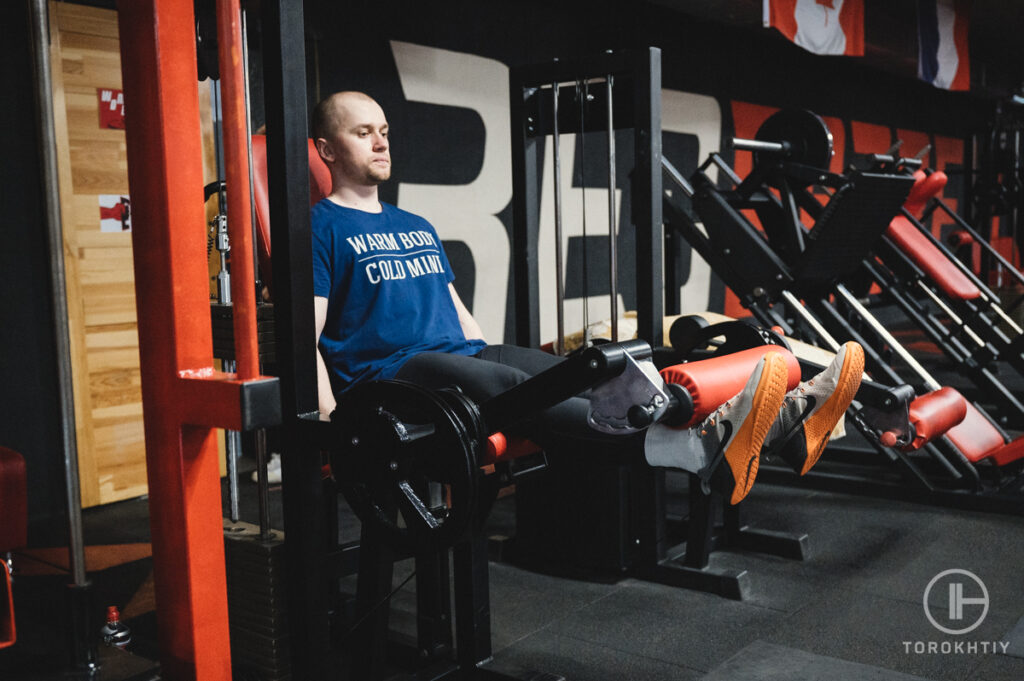
3. Hyperextension
Overextension of the knees at the top of the leg extension movement is critical to be cautious of. While it might seem like a way to maximize the exercise’s range of motion, it can strain the knee joint.
Hyperextension means pushing the knees beyond their natural range, leading to discomfort or even injury. Stopping short of full knee extension during leg extensions is advisable to prevent this. This reduces the risk of hyperextension, ensuring that your knee joint remains within a safe and comfortable range of motion.
4. Preexisting Knee Issues
Leg extensions should be cautiously approached if you have preexisting knee problems or injuries. The exercise can exacerbate existing issues due to the repetitive and focused nature of the movement.
Conditions such as patellar tendonitis, anterior cruciate ligament (ACL) injuries, or meniscus tears can be susceptible to the stresses posed by leg extensions. In such cases, it’s advisable to consult with a healthcare professional or physical therapist before including leg extensions in your workout routine.
They can guide you on whether and how to safely incorporate this exercise or suggest alternative activities less likely to aggravate your condition.
Now that we’ve explored these potential contributing issues, it’s crucial to discuss how to perform leg extensions correctly to reduce the risk of knee pain and injury while still benefiting from this exercise.
How to Do Leg Extensions Correctly?
Performing leg extensions correctly is imperative to minimize the risk of knee pain and injury. Follow these steps:
1. Proper Set-up
Adjust the machine to your body size. Ensure your back is firmly against the backrest and your feet are securely hooked under the padded bar.
2. Controlled Movements
Lift and lower the weights in a controlled manner. Avoid jerking or using momentum.
3. Partial Range of Motion
Instead of locking out your knees at the top, stop short of full extension to reduce knee stress.
4. Appropriate Weight
Start with a manageable weight and gradually increase it as you build strength.
5. Mindful Breathing
Exhale as you extend your legs, and inhale as you return to the starting position. Proper breathing helps stabilize your core and maintain control.
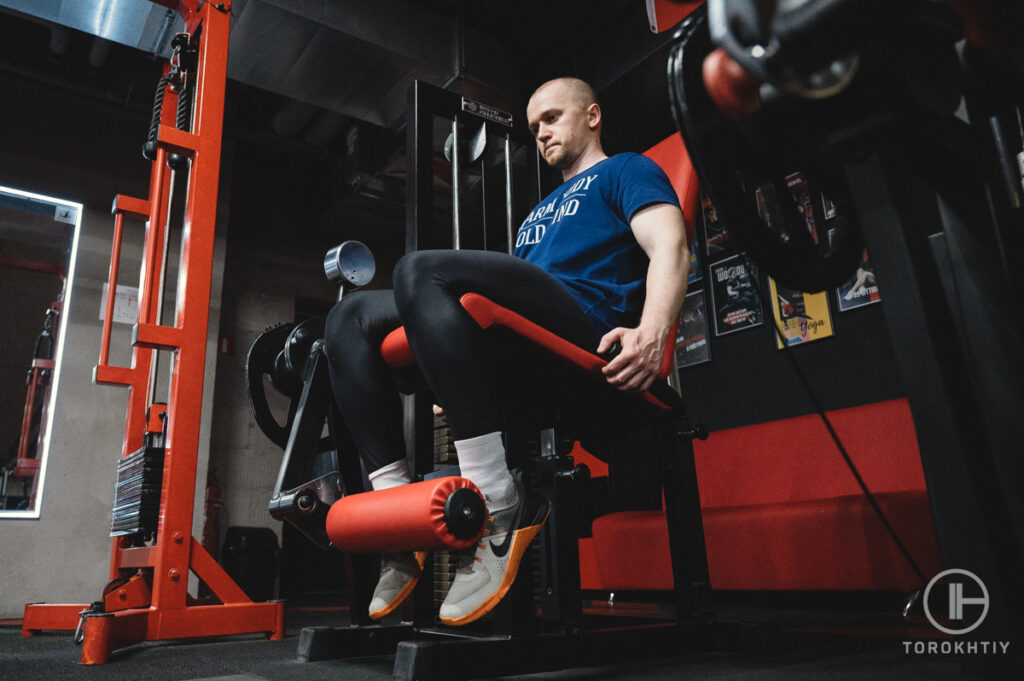
Leg Extensions for Rehabilitation
Despite the potential risks, leg extensions can be valuable in knee rehabilitation. Here are some tips for using leg extensions in a rehabilitation context:
1. Consult a Professional
If you’re rehabilitating a knee injury, seek guidance from a physical therapist or healthcare professional. They can design a tailored program that suits your needs.
2. Light Resistance
Start with minimal resistance or no weight and gradually increase it as your knee recovers.
3. High Repetitions
Perform higher repetitions with lower weights to build endurance and stability.
4. Slow Tempo
Slow and controlled movements are fundamental during rehabilitation to minimize stress on the knee joint.
5. Monitoring Discomfort
Pay close attention to any discomfort or pain during the exercise. If you experience pain beyond mild discomfort, consult your healthcare provider immediately.
5 Leg Extension Variations/Modifications to Prevent Knee Pain
If you’re concerned about knee pain when doing leg extensions, consider these alternative exercises that can provide similar benefits without the same risk:
1. Lunges
Lunges are a dynamic lower body exercise that actively engages the quadriceps and involves other leg muscles. The beauty of lunges lies in their ability to target the quads without imposing significant stress on the knee joint.
When performing lunges, your knee flexion is controlled, and the movement is distributed across the hips, knees, and ankles. This balanced distribution of force helps minimize direct strain on the knees. Moreover, lunges promote stability and balance, enhancing overall leg strength while keeping the knees relatively safe when executed with proper form.
2. Leg Press
The leg press machine is a valuable alternative for those concerned about knee stress during leg exercises. Unlike leg extensions, which involve knee extension and can sometimes lead to discomfort, the leg press focuses on targeting the quadriceps without imposing as much strain on the knees.
This is achieved by sitting and pushing a weighted platform away from the body using the feet. The biomechanics of the leg press ensure that the load is distributed more evenly across the leg muscles, reducing the likelihood of knee pain or injury. It’s a practical choice for individuals looking to build quad strength while minimizing knee stress.
3. Step-Ups
Step-ups are another excellent exercise to effectively work your quadriceps without overloading your knees. This exercise involves stepping onto a bench or sturdy platform and lowering yourself. It engages the quads primarily to lift your body weight but does so in a controlled and balanced manner.
The critical advantage of step-ups is that they promote functional strength and mimic daily movements, making them an excellent choice for overall leg development. By selecting an appropriate platform height and focusing on proper technique, you can work your quads effectively while sparing your knees from excessive strain.
4. Wall Sits
Wall sits are a static exercise offering a unique approach to strengthening the quadriceps without dynamic knee movement. In a wall sit, you lower your body into a seated position with your back against a wall and your legs forming a 90-degree angle.
This position places a continuous and sustained demand on the quads to support your body weight, effectively targeting the muscle group without repetitive or jarring knee motion.
Wall sits are an isometric exercise that can help build quad strength and endurance while minimizing the risk of knee discomfort or injury, provided you maintain proper posture throughout the movement.
5. Resistance Band Knee Extensions
If you’re looking for an alternative to traditional leg extensions without the need for heavy weights, resistance band knee extensions can be a suitable choice. This exercise involves attaching a resistance band to a sturdy anchor point and sitting on a chair with the band around one of your ankles.
Extending your legs against the resistance, you engage your quadriceps while controlling the movement. The advantage of resistance bands is that you can easily adjust the resistance level to match your fitness level. This option can strengthen your quads without placing excessive stress on your knees, making it a valuable addition to your workout routine.
FAQ
1. Do leg extensions cause knee problems?
Performing leg extensions incorrectly, using excessive weight, or having pre-existing knee issues can cause knee problems. Improper form while doing leg extensions can place unnecessary stress on the knee joint, leading to discomfort or injury.
Prioritize proper form, use appropriate weights, and consult a fitness professional or physical therapist if you have knee concerns before including leg extensions in your workout routine.
2. Do leg extensions help strengthen knees?
Of course, the short answer is yes. The primary target is the quadriceps located in the front of the thigh. While they can help build quad strength, strong quadriceps can provide additional stability to the knee joint, potentially improving overall performance.
However, it’s essential to use proper form, avoid excessive weights, and include a well-rounded exercise routine to engage all the muscle groups around the knee for comprehensive strength training.
3. Are leg extensions bad for knee cartilage?
Improper leg extensions can damage knee cartilage. Prioritize proper form and appropriate weight, and seek guidance from a fitness professional or physical therapist to ensure safe exercise.
Conclusion
Are leg extensions harmful for knees? The answer depends on how they are performed. Leg extensions can be valuable to your leg-strengthening workout routine when executed correctly.
However, improper form, excessive weight, and pre-existing knee issues can make leg extensions problematic for your knees. By following the proper technique and considering alternative exercises, you can continue to work on strengthening your quadriceps while minimizing the risk of knee pain or injury.
Are you having any issues with your knee? Feel free to share your thoughts with us. If you have any questions or concerns, please do not hesitate to contact us via the comments section.
References:
- Plotkin D, Coleman M, Van Every D, Maldonado J, Oberlin D, Israetel M, Feather J, Alto A, Vigotsky AD, Schoenfeld BJ. “Progressive overload without progressing load? The effects of load or repetition progression on muscular adaptations” PeerJ. 2022 Sep 30;10:e14142. doi: 10.7717/peerj.14142. PMID: 36199287; PMCID: PMC9528903.
- Vincent KR, Vasilopoulos T, Montero C, Vincent HK. Eccentric and Concentric Resistance Exercise Comparison for Knee Osteoarthritis. Med Sci Sports Exerc. 2019 Oct;51(10):1977-1986. doi: 10.1249/MSS.0000000000002010. PMID: 31033900; PMCID: PMC6746593.
- Shiao Y, Hoang T. Exercise Condition Sensing in Smart Leg Extension Machine. Sensors (Basel). 2022 Aug 23;22(17):6336. doi: 10.3390/s22176336. PMID: 36080804; PMCID: PMC9459932.
- Kanada Y, Sakurai H, Sugiura Y, Arai T, Koyama S, Tanabe S. Evaluation of the relationship between joint torque and angular velocity using a modified leg extension machine. Fujita Med J. 2019;5(4):85-91. doi: 10.20407/fmj.2018-018. Epub 2019 Sep 25. PMID: 35111508; PMCID: PMC8766240.
- Moraes AC, Bankoff AD, Okano AH, Simões EC, Rodrigues CE. Analysis of knee movements on leg extension machine: an electromyography study of the rectus femoris muscle. Electromyogr Clin Neurophysiol. 2004 Jan-Feb;44(1):15-21. PMID: 15008020.
- Rogers, P. (2022). How to do a leg extension: proper form, variations, and common mistakes.
- Paul Rogers, “How to Do a Leg Extension: Proper Form, Variations, and Common Mistakes” https://www.verywellfit.com/leg-extensions-benefit-or-risk-3498573 (July 31, 2022)
- American Council on Exercise (ACE). (2021). ACE-sponsored Research: The Effect of Varying Foot Plate Position on Quadriceps and Hamstring Muscle Activity During Leg Extension Exercise. https://www.acefitness.org/education-and-resources/professional/prosource/june-2011/2773/ace-sponsored-research-the-effect-of-varying-foot-plate-position-on-quadriceps-and-hamstring-muscle-activity-during-leg-extension-exercise/
- National Strength and Conditioning Association (NSCA). (2020). Exercises for Specific Populations: Leg Extension. https://www.nsca.com/education/exercises-for-specific-populations/leg-extension/
- Physiopedia. (n.d.). Leg Extension. https://www.physio-pedia.com/Leg_Extension
- Get Exercise Confident. (2015, July 27). How to do the STEP UP: technique and common mistakes [Video]. YouTube. https://www.youtube.com/watch?v=WCFCdxzFBa4
- Renaissance Periodization. (2022b, August 4). How To Leg Press For Best Quad Growth | Targeting The Muscle Series [Video]. YouTube. https://www.youtube.com/watch?v=B6rGDcfyPto
Why Trust Us?
With over 20 years in Olympic Weightlifting, our team does its best to provide the audience with ultimate support and meet the needs and requirements of advanced athletes and professional lifters, as well as people who strive to open new opportunities and develop their physical capabilities with us.
By trusting the recommendations of our certified experts in coaching, nutrition, dietology, and sports training programming, as well as scientific consultants, and physiotherapists, we provide you with thorough, well-considered, and scientifically proven content. All the information given in the articles concerning workout programming, separate exercises, and athletic performance, in general, is based on verified data. We ensure that you can rely on our professionals’ pieces of advice and recommendations that can be treated as personalized ones which will benefit you and fully meet your needs.
The product testing process is described in more detail here
Author: Ernesto Mendez
Orthopedic Clinical Specialist
Best Results: Snatch – 208 kg,
C&J – 240 kg
Dr. Ernesto Mendez is a licensed physical therapist, a board Orthopedic Clinical Specialist (OCS) and founder of Movement 4 Wellness Physical Therapy, LLC. He earned his degree from Thomas Jefferson University. He is also an Olympic weightlifting coach (USAW L1) and Functional Fitness Level 1 Trainer. His experience includes the areas of pain management, movement analysis, injury recovery, surgical rehab, corrective exercise, and athletic, military, and occupational performance. Dr Mendez is passionate about Olympic weightlifting and fitness. Ernesto Mendez is responsible for designing multiple training programs, writing blog articles, posting daily weightlifting content, doing live weightlifting and mobility seminars.


